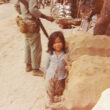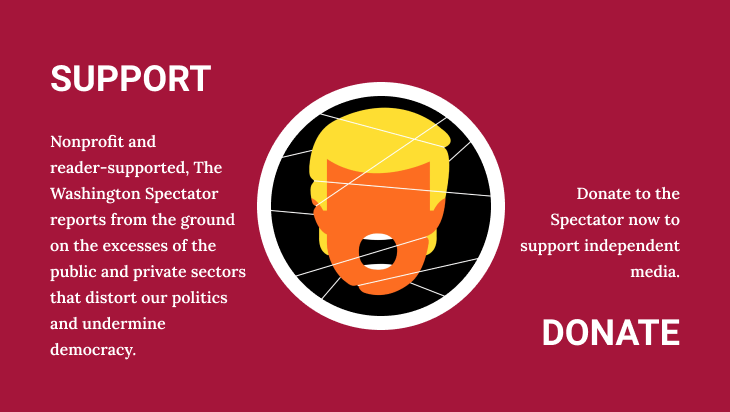In April 2025, the world will mark 50 years since the fall of Saigon and the end of the U.S. involvement in the Vietnam War. The Vietnam War had a great impact on the political, cultural, military, economic, social, and educational aspects of American life. It was a conflict of the Cold War era after World War II that pitted democracy (the United States and its allies) against the Soviet Union (Communist governments). My reflection of Vietnam is both personal and public, emotional and meditative. I was a child in the 1960s and felt the war and the Civil Rights Movement were fought for my generation’s benefit.
In 2006, I decided to curate an exhibition and edit a book on the African American experience in Vietnam. For a museum exhibit, I was interested in developing a multimedia exhibition that included graphics, artifacts, archives, art, audio, and video components. I wanted to connect to the sounds, views, and culture of Vietnam as I remembered and researched them.
The project was called Soul Soldiers: African Americans and the Vietnam Era. The exhibit opened at the Senator John Heinz History Center on Veterans Day 2006. In 2008, there was a seven-city tour that traveled to Chicago, Dallas, Birmingham, Memphis, Richmond, Philadelphia, and Cleveland. It was seen by more than 450,000 people. Soul Soldiers was awarded the American Association for State and Local History Award of Merit in 2007, along with the S.K. Stevens Memorial Award and Award of Merit from the Pennsylvania Federation of Museums.
Awards aside, the meaning of this project was to hold a conversation about the African American experience. I wanted to speak about the issue of the war during the Civil Rights Movement and its subsequent impacts on Black life and culture. I posed questions: What was the impact of the Vietnam War on the Civil Rights Movement, and vice versa? What impact did the war have on Black families and communities? For answers, I researched the war and its era and included oral histories with Vietnam veterans, conversations and reviewing primary documents with community members, and most of all, interviewing my own family members.
One of the motivating factors for this project was the tragic experience of my eldest sibling, Jimmy McNeil. Jimmy was a Vietnam vet with two tours in the 593rd Signal Company of the 90th Replacement Battalion from 1965 to 1967. His job in Vietnam was to install communications systems for the Army. After his return to the world, he joined the Army Reserves and was planning a return to Vietnam in 1971. However, he was murdered in New York City in November 1971 (Black, Samuel W. editor, Soul Soldiers: African Americans and the Vietnam Era, Introduction, Pittsburgh: Senator John Heinz History Center, p. ix-x.). I was a child when Jimmy served and only 10 years old when I awakened one morning to be told that my brother was dead.
As an adult, I wondered about the irony of him surviving in a war that took so many young men’s lives, only to die on the streets of New York. He was the father of two young boys and the brother of 12 siblings. His death was devastating to our family. My efforts to bring closure to his death and the deaths of others in the African American community gave reason to the Soul Soldiers project. Interviews with Vietnam veterans about their service yielded deep insight into the thoughts and concerns of many veterans. I would ask questions about their experience of war, their families, their age at the time, and their thoughts about and connections to the Civil Rights Movement. I buttressed these interviews with my expanding familiarity with the perspectives of the veterans, and more intimate knowledge of the movement.
Veteran histories are not singular; as one vet told me, “Everyone had their own Vietnam.” (Interview with Michael Flournoy, July 14, 2005. Senator John Heinz History Center.) In my search to understand the connection between the Vietnam War and the Civil Rights Movement, I interviewed the veteran Michael Flournoy. Flournoy served in the 101st Airborne Division in Vietnam, after prior service in the Dominican Republic and in Detroit during the 1967 riots. Flournoy’s journey started as a student at Alabama A&M College in 1961, where he joined a student chapter of Congress on Racial Equality. He would leave college and dedicate himself to the mission of CORE; later he was arrested and jailed during a voter registration campaign called “Jail Without Bail.” His Louisiana jailer notified his Pittsburgh draft board, and upon his release he was notified that he had been drafted (Black, Samuel W. editor, Soul Soldiers: African Americans and the Vietnam Era, Introduction, Pittsburgh: Senator John Heinz History Center, p. 137-138). Other cases of civil rights workers’ sons being drafted lean toward the notion that the draft was being used as a weapon against the Civil Rights Movement.
Carl Johnson was a 1965 graduate of Philadelphia’s Thomas Edison High School. He joined the Marine Corps after graduation and became a member of one of the largest classes of draftees and deaths from one school (Black, Samuel W. editor, Soul Soldiers: African Americans and the Vietnam Era, Introduction, Pittsburgh: Senator John Heinz History Center, p. 136). Some families had multiple members serve in Vietnam. Chris Jenkins of Pittsburgh, a sniper with the 1st Calvary Division in 1970, was one of five brothers who served in the war.
One aspect of producing the oral history involved working with an established post-traumatic stress disorder counseling group. Michael Flournoy, in his capacity as facilitator, instructed the vets to be open and honest with me during the interviews. As a result, I was able to draw out memories that were deposited deep inside the vets, which they had not talked about since the war. We talked about combat, wounds, race relations, and civil rights. Several vets were in-country during the assassination of the Reverend Dr. Martin Luther King, Jr. Chris Jenkins discussed how he was a follower of Malcom X and was not moved by King’s assassination. Jenkins explains, “In the United States there was a very large militant population, followers of Elijah, of Malcolm X, at the time. People who were in Martin Luther King’s corner but at the same time didn’t want to turn their cheek. Wanted to stand up and be a man.” (Black, Samuel W. editor, Soul Soldiers: African Americans and the Vietnam Era, Introduction, Pittsburgh: Senator John Heinz History Center, p. 140) Black vets had to straddle the roles of fighting a war and expressing their voice as Black men. In Nam, Jenkins joined the “Mau Mau” group, a Black militant nationalist-leaning group of soldiers. “We were so politically minded, so strong-minded about being not only just Black men but strong, stand-up Black men.” (Black, Samuel W. editor, Soul Soldiers: African Americans and the Vietnam Era, Introduction, Pittsburgh: Senator John Heinz History Center, p. 141-142)
Richard Craddock joined the Army after high school, in 1961. He eventually would serve in the Special Forces in Nam. His combat and special assignments behind enemy lines did not afford him time to contemplate civil rights. However, in 1968, he and his brother Stanley accompanied the body of their stepbrother Ralph back to Pittsburgh for burial. During his return flight over the Pacific Ocean to Vietnam, the pilot announced the assassination of Dr. King. By the time the plane landed, the struggle for civil rights had finally hit home. It was then that he questioned the war. Craddock stated, “By the time I left Vietnam in 1970, I was disenchanted with being an American.” (Black, Samuel W. editor, Soul Soldiers: African Americans and the Vietnam Era, Introduction, Pittsburgh: Senator John Heinz History Center, p. 131-132)
The issue of race during the Vietnam War reflected in many ways the concerns of the Civil Rights Movement. In Fighting on Two Fronts (NYU Press), James Westheider illustrated how American soldiers in Vietnam grappled with many of the racial conflicts that were tearing apart their homeland. Herman Graham, in The Brothers’ Vietnam War: Black Power, Manhood, and the Military Experience, suggested that the military became a space where black men could find a sense of belonging and foster a sense of solidarity with one another, aspirations which had often been denied them in a racist society.
Culturally, Black life in the 1960s was undergoing a revolution. Popular culture exploded with new sounds in music, fashion, and cultural expression. Vietnam impacted the Black cultural revolution, and Black culture impacted Vietnam—with interpersonal expressions and mannerisms such as the DAP (dignity and pride) handshake greeting displayed by Black vets. Bruce Snyder, a combat communications operator stationed on a Korean fire base in Nam, radioed air strikes to support ground forces. He met many GIs over the radio. Snyder described an encounter at the first commemoration of the assassination of Dr. King, at Re Beach in 1969. Snyder came upon a vet whose voice he recognized. He explained, “We gave up the DAP. He said (in hand gestures) he was hit three times. We didn’t say a word to each other. It was all through the DAP.” (Interview with Bruce Snyder, September 8, 2005, Senator John Heinz History Center)
These and the many other stories of African Americans in the Vietnam War that were gathered in the exhibition and a companion book documented aspects of the Black experience that had not been told before. Fifty years after the end of the war, I can reflect on this project, which started with my quest to honor my brother and bring closure to African American families, communities, and veterans who had felt the sorrow of loss and witnessed the revolution of Blackness.
Samuel W Black is an award-winning curator and editor whose exhibitions at the Senator John Heinz History Center have forged a new path in museum exhibitions. He has served as president of the Association of African American Museums and the Council of the Pennsylvania Historical Association.



0 Comments